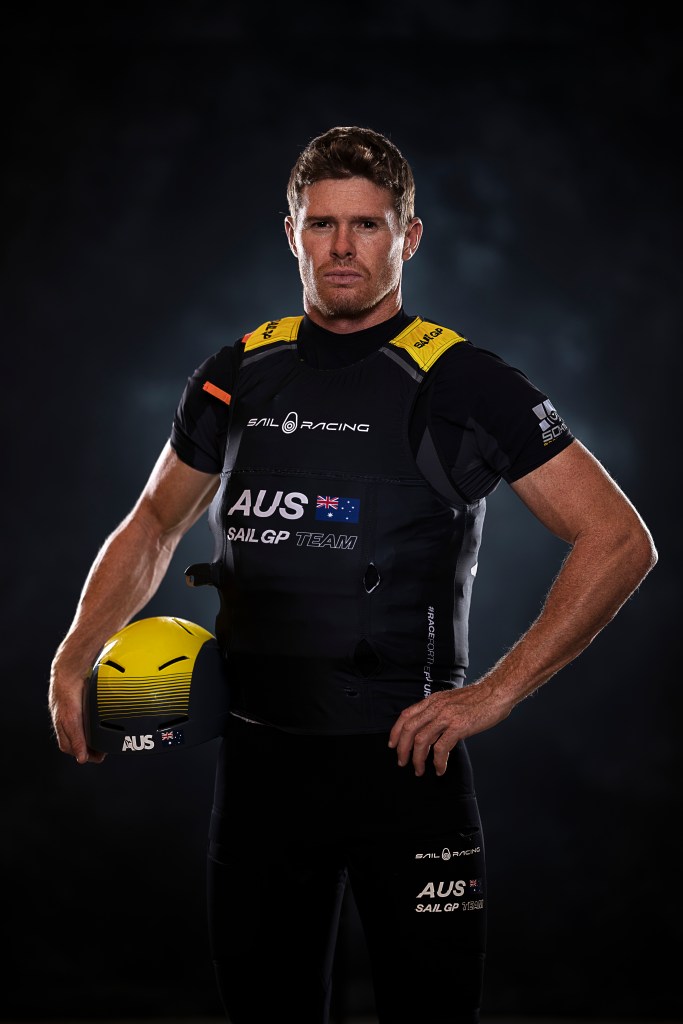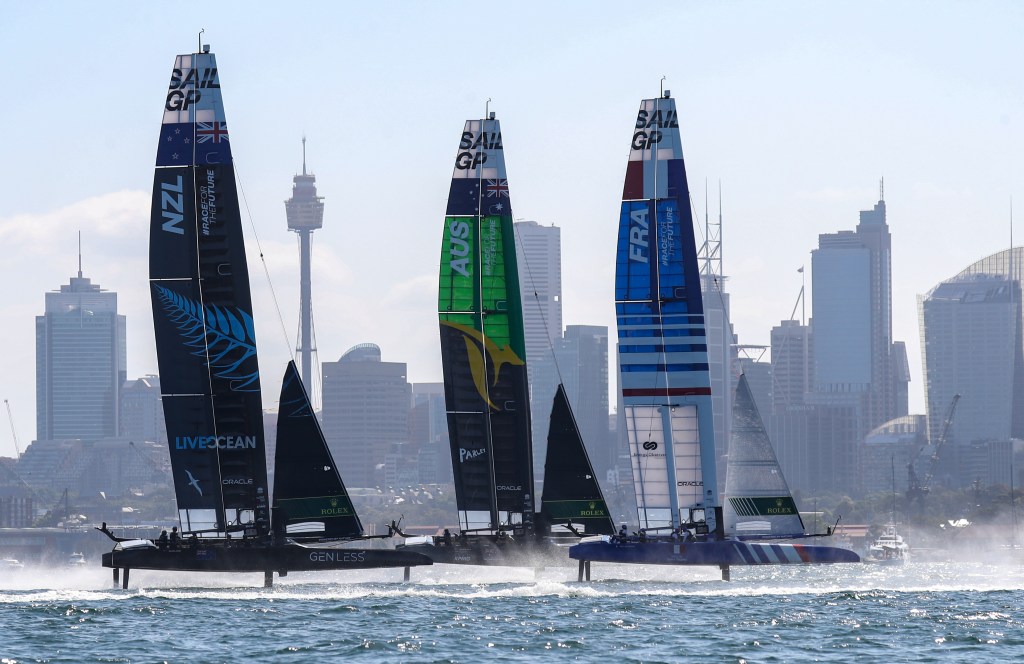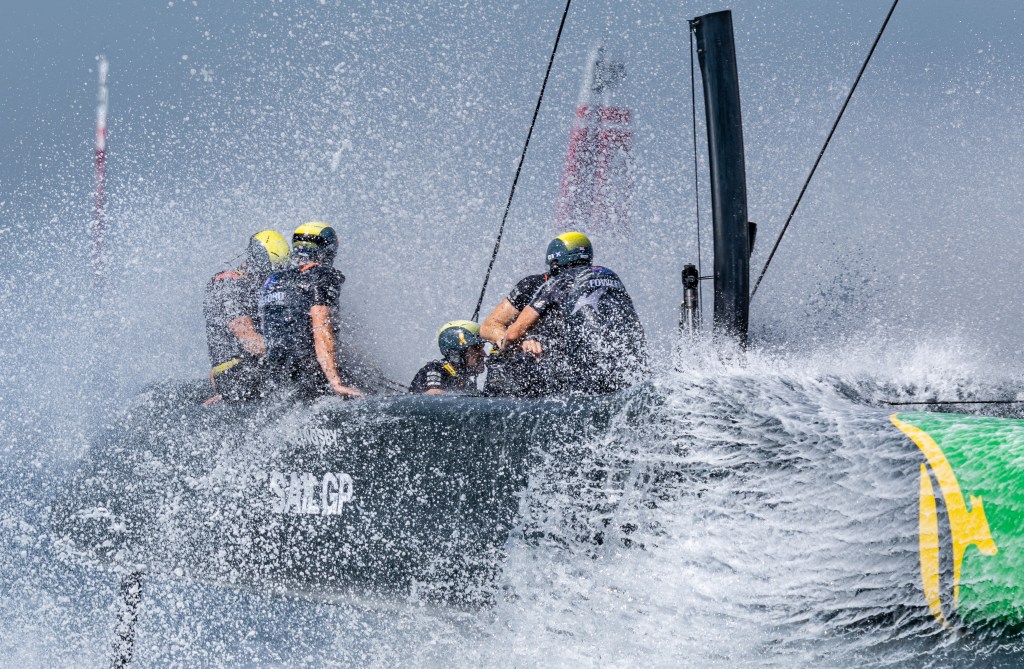“Leaders of the sporting world are coming to our little sailing culture and asking, ‘how can we be better’ so that’s very cool.”

SailGP will be on Sydney Harbour this weekend, February 18, and 19, 2023, sailing at almost 100 km an hour with all-natural power to showcase sustainability in a sporting arena.
Powered by wind and innovative technology, nine teams are competing in Season 3 – including new franchises in Canada and Switzerland and returning nations Australia, Denmark, France, Great Britain, New Zealand, Spain and the United States. The race on Sydney Harbour is the league’s most extensive season roster to date.
Australian SailGP captain, Tom Slingsby, says the stunning F50s and high speeds create a thrilling spectacle that can help “educate our supporters on what we need to do to have clean energy solutions and reduce our carbon footprint”.
While natural power is at work, there is incredible innovation and technology behind the building of the boats.

“Obviously, it’s not your traditional sailing at all,” Slingsby tells Forbes Australia in an interview. “The most noticeable thing is probably the hydrofoils. This allows us to create enough lift at a certain speed to pop the two-and-a-half-tonne boat out of the water.”
Once the boat is out of the water, reducing the water drag on the hulls, the boat can go faster and faster, reaching around four times the wind speed when up on the foils, Slingsby explains.
“The other pretty cool thing is the wing, which is not very dissimilar to an aeroplane wing. We’ve found that it’s more efficient to use the wind. We can create more power and have less drag than a traditional sail. They are the two big standout things on the F50s,” he says.
The technology is around 10 years old but being constantly tweaked, refined and shared across all competing franchises, taking these catamarans to the forefront of sailing technology to be the fastest boats in the world, Slingsby says.
“The America’s Cup is a very cool sailing competition, but it’s a design race, and the boats are all different, and they hit the start line and 98% of the time, one boat is faster than the other, and that boat will go on to win. You already know the race’s outcome before it’s even started. Whereas with our GP, all the boats are identical, so it comes down to the team’s skill more than the technology.”
Slingsby is one of the most successful sailors in the world, having won an Olympic gold medal, nine world championships, and the America’s Cup, and set numerous world records in addition to being crowned 2010 World Sailor of the Year.

In 2012, he was named the Australian Institute of Sport Athlete of the Year and received the Medal of the Order of Australia. After the 2012 Olympics, he joined ORACLE TEAM USA as a strategist, helping mount one of the greatest comebacks in the sport’s history when the team won the America’s Cup in 2013. He went on to win the 2016 Sydney Hobart Yacht Race before returning to the American team as tactician and team manager for the 35th America’s Cup.
“I’m on the water every day. My livelihood and everything comes from being on the water. Everyone knows about the plastics problem, but I’m out there seeing it every single day. Personally, for me, there’s so many other things, too, with carbon emissions and things like that. But for me, plastics in the ocean are something I see daily.
“In Australia, we were pretty good. It was definitely one of the best countries for keeping clean, looking after your country, and being responsible for how it’s presented. We’re very good, but sure, we can always get better.”
He says he is fortunate to be in a sport that is “very clean and very sustainable in how we operate, and if I can promote that and pass it on to the next generations of even just sailors, I’ll be pretty happy, but hopefully, we can expand a bit [to the broader population].”
He says there are still areas in sailing that could be improved, but SailGP sailing is climate positive.

“We’re sailing around on the boat. We don’t use any fuel. It’s all naturally powered,” he says.
Teams are trying to reduce their carbon footprint further when they travel to races and looking to use electric outboard engines for power boats used in the setting up of events.
“On the water, with power boats, we’re now looking to partner with electric outboard engines and how can we promote this in the future and make it so that our footprint just gets smaller and smaller,” he says.
The teams host beach clean-ups around the events to “show what we stand for”.
“This is something that I guess the top sailors believe in, and we hope we can pass that on. Many other sports are looking at us and taking note, and we’re leading by example. Through our Impact League, I know that different [global sporting] organisations have contacted us saying this is very progressive and that we are leading the way, and they want to know how they can implement it in their sport,” Slingsby says.
“Leaders of the sporting world are coming to our little sailing culture and asking, ‘how can we be better’ so that’s very cool.”
SailGP has released Episode 7 of the docuseries, ‘Racing on the Edge’, diving into the secrets of Australia’s success. Visit SailGP’s official YouTube and watch PART 1 & PART 2.